What Do Cedar Waxwings Eat? (Complete Guide) Discover Their Diet Now! Are you curious about these striking birds with their sleek, silky plumage and distinct markings? Whether you’re an avid birdwatcher or a curious nature lover, unlock the secrets of their diet and feeding habits right here. From berry-filled feasts to surprising insect snacks, this comprehensive guide will reveal everything you need to know about what fuels the Cedar Waxwing’s vibrant life. Dive into the fascinating world of Cedar Waxwing dining and enrich your understanding of these delightful avians.
What are the cedar waxwings’ favorite foods?
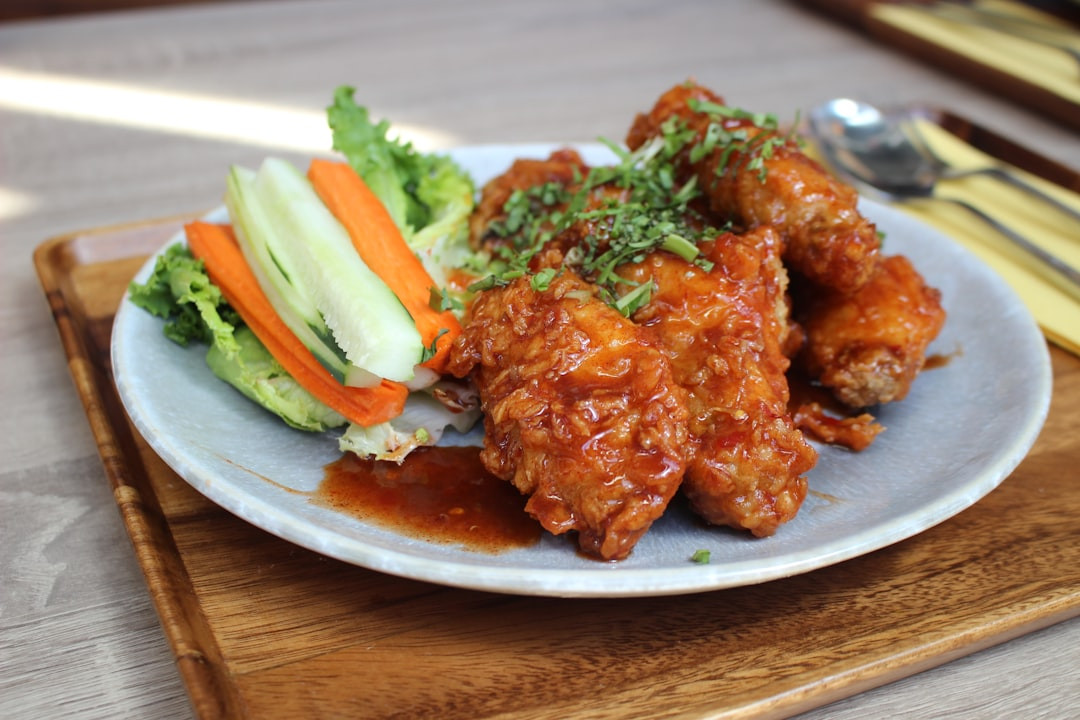
Cedar waxwings are truly fascinating birds with a diet that reflects their unique preferences and seasonal changes. But what are the cedar waxwings’ favorite foods? These sleek, social birds have a strong preference for fruit, making them avid foragers during the summer and fall. They particularly love small berries like juniper, dogwood, and serviceberries, which provide a rich source of energy.
During the winter, when fresh berries are scarce, cedar waxwings adapt by eating dried fruits and even the occasional apple left on the tree. But their diet isn’t limited to just fruit. Cedar waxwings also catch insects mid-air, especially during the breeding season when they need extra protein to raise their young. You’ll often spot them snatching up flies, beetles, and caterpillars, showcasing their impressive aerial acrobatics.
Interestingly, cedar waxwings are known to gather in large flocks, which means they sometimes share their finds with each other. This social behavior enhances their ability to locate food and thrive in various environments. So, whether it’s plucking a berry from a bush or catching a flying insect, the cedar waxwings’ favorite foods are as varied as they are, making these birds both adaptable and intriguing.
What berries do cedar waxwings eat?

Cedar Waxwings are fascinating birds known for their sleek feathers and distinctive call. One of the most intriguing aspects of their behavior is their varied diet, which primarily focuses on a wide selection of berries. If you’ve ever wondered, "What berries do cedar waxwings eat?" you’re in for an interesting discovery.
These elegant birds have quite the palate, enjoying a multitude of berry varieties throughout the year. You might catch them feasting on serviceberries, juniper berries, or even the small, vibrant fruits of dogwood. In the fall, they particularly favor the ripe, sugary goodness of crabapples and hawthorns.
Beyond berries, cedar waxwings also have a taste for other fruits, like cherries and even the occasional apple slice. During the breeding season, they diversify their diet with protein-rich insects, which help nourish their young. Despite their love for fruit, they’re quite opportunistic and will adapt their diet based on what’s seasonally available.
It’s not just their diet that makes cedar waxwings interesting, but how social they are when dining. You’ll often see them flocking together, passing berries back and forth, a behavior that strengthens their bonds. So next time you see these graceful birds, you’ll know exactly which berries they might be snacking on!
How often do cedar waxwings eat?
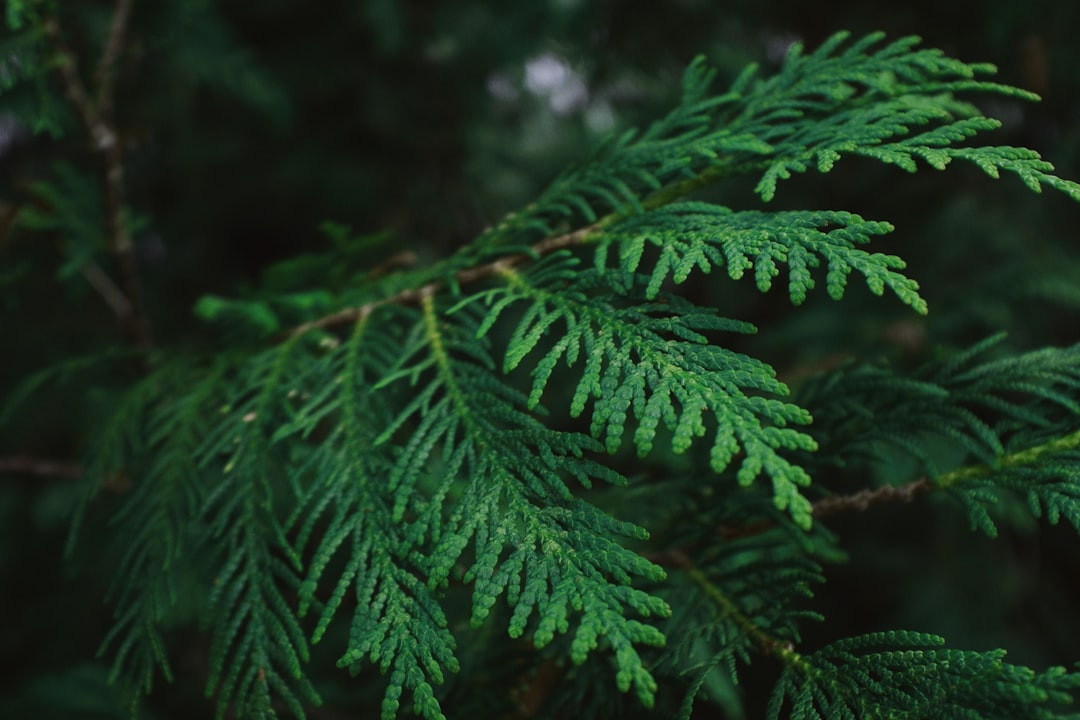
Cedar Waxwings are truly fascinating birds with a diet that’s as intriguing as their name. These sleek, social birds primarily feast on fruits and berries. Their favorite treats include juniper berries, dogwood fruits, and small crabapples. But that’s not all they savor; they also enjoy insects, especially during the breeding season when they need extra protein for their young.
You might wonder, "How often do Cedar Waxwings eat?" Well, these little feathered creatures have quite the appetite! They tend to eat multiple times a day, driven by the availability of food sources. In the summer, when fruits are abundant, you can spot them plucking berries from trees all day long. During winter, their diet shifts slightly, and they might rely more on whatever berries are available, often found in clusters amid the snow.
Interestingly, Cedar Waxwings have a unique way of sourcing their meals. They are known for their aerial acrobatics, catching insects mid-flight or fluttering gracefully to snag a berry. So, the next time you see these elegant birds in your garden, you’ll know they’re there for a scrumptious snack, enjoying the bounty that nature provides, all day, every day.
How do cedar waxwings find food?

Cedar waxwings are fascinating birds renowned for their sleek appearance and vibrant personalities. If you’ve ever caught a glimpse of one, you might be curious about their eating habits. These birds have a diet that’s as diverse as it is nutritious, primarily consisting of fruits and berries. They particularly enjoy serviceberries, dogwood berries, and cedar berries, which is how they got their name!
During the summer months, cedar waxwings also feast on insects like beetles and caterpillars, adding protein to their fruity diet. But how do cedar waxwings find food? These clever birds rely on their keen eyesight and social habits to locate food sources. They typically move in flocks, making it easier to spot berry-laden trees and shrubs from a distance. When one bird finds a good food source, others quickly join in, creating a communal dining experience.
In winter, when fresh fruit is scarce, cedar waxwings are resourceful and adapt by eating dried fruits and even sipping on tree sap or discovering alternative food sources. All in all, their flexible diet and social skills make them efficient foragers year-round. Whether it’s a summer feast of insects or a winter berry pick, cedar waxwings are always up to the challenge.
What time of day do cedar waxwings feed?
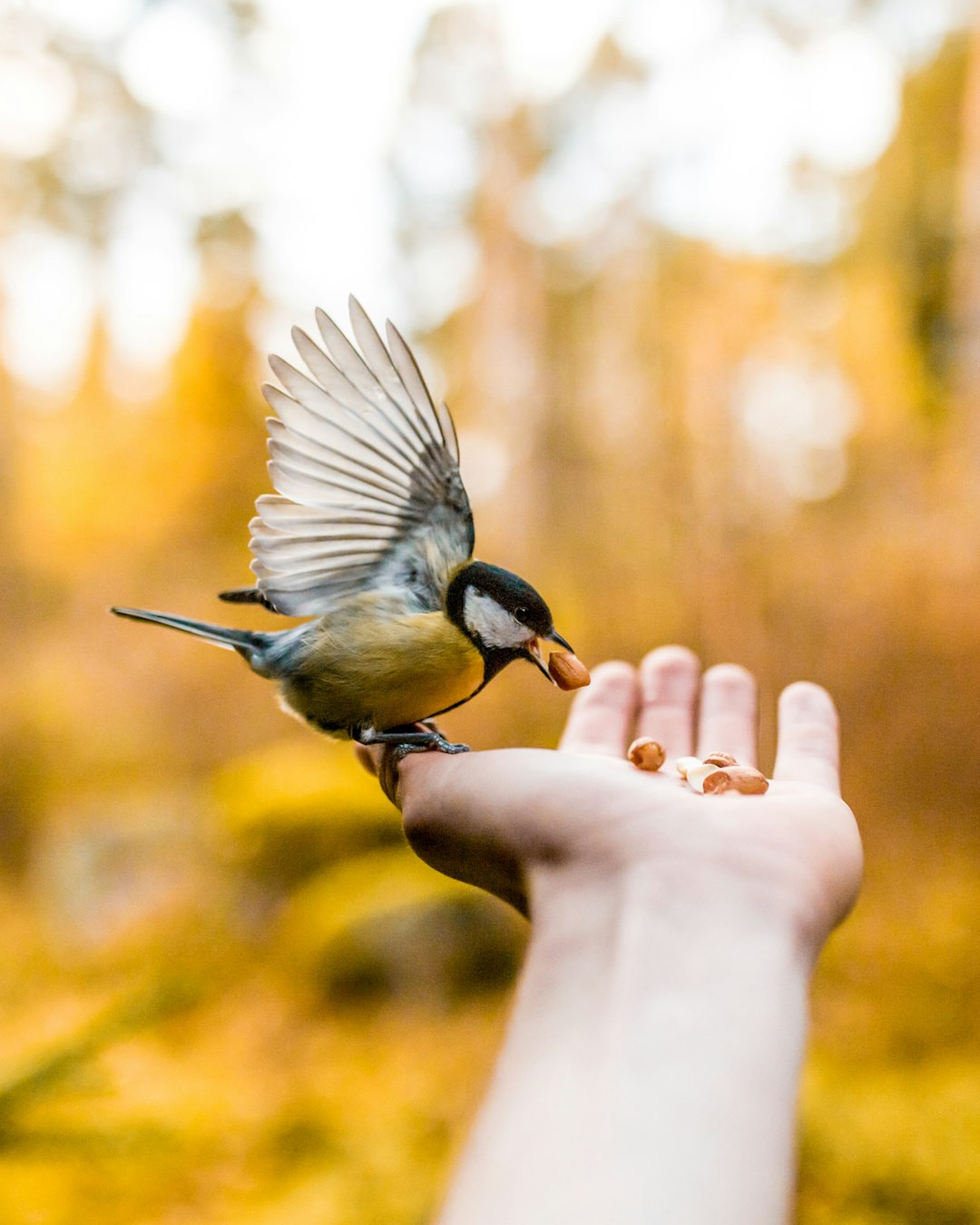
Ever wondered what Cedar Waxwings eat? These striking birds have quite a diverse diet. Primarily, cedar waxwings feast on berries and small fruits. You’ll often spot them nibbling on juniper, dogwood, and serviceberries. Their fondness for sugary fruits helps them stay energetic and spry as they flit about in flocks. During the summer, they also enjoy insects like beetles and caterpillars, which provide a good protein boost.
Curious about what time of day cedar waxwings feed? These birds are most active in the morning and late afternoon. During these times, you might notice them busily hopping from branch to branch or even catching insects mid-flight. Their feeding habits keep their energy levels high and ensure they’re ready for all the socializing and breeding activities that cedar waxwings love.
Besides fruits and insects, these birds occasionally sip on tree sap or even nibble on flowers. Their varied diet is a testament to their adaptability and resourcefulness. If you want to attract cedar waxwings to your garden, consider planting some of their favorite berry-producing bushes and enjoy the captivating sight of these birds feeding.
What do cedar waxwings eat in the winter?
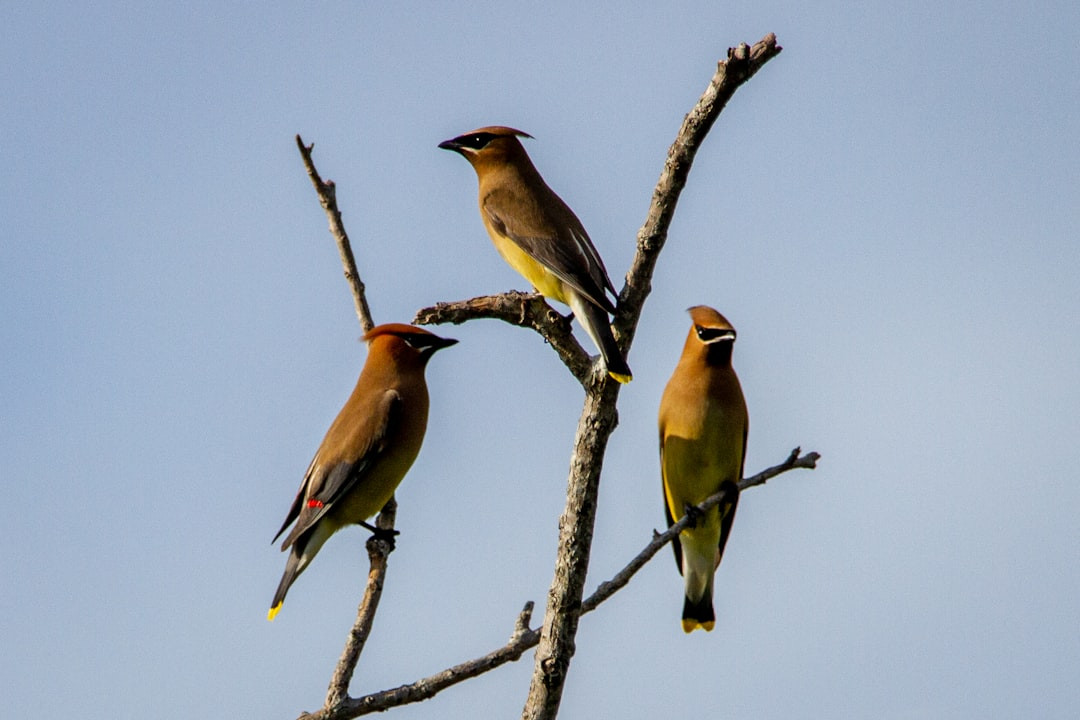
Ever wondered what cedar waxwings munch on during the chilly winter months? These sleek, social birds have a pretty varied diet that changes with the seasons. When winter rolls around, their menu takes a turn. So, what do cedar waxwings eat in the winter? The answer primarily revolves around berries and fruits.
In the cold season, cedar waxwings are often seen flocking to trees and shrubs heavy with berries. Some of their winter favorites include juniper berries, holly berries, and crabapples. They will even go after more exotic fare like mistletoe berries if they’re available. These high-energy snacks help them sustain themselves when insects are scarce.
Occasionally, you might catch cedar waxwings indulging in frozen fruits left behind from the fall. Think about apples and pears that have dropped to the ground and gotten a bit mushy. These fruits can be a lifesaver during the colder months.
To support these lovely feathered friends, consider planting berry-producing shrubs or trees in your yard. It’s a win-win – you’ll get to enjoy the sight of these elegant birds, and they’ll have a reliable food source. So next time winter comes around, keep an eye out and see what cedar waxwings are feasting on!
What do cedar waxwings eat in the summer?
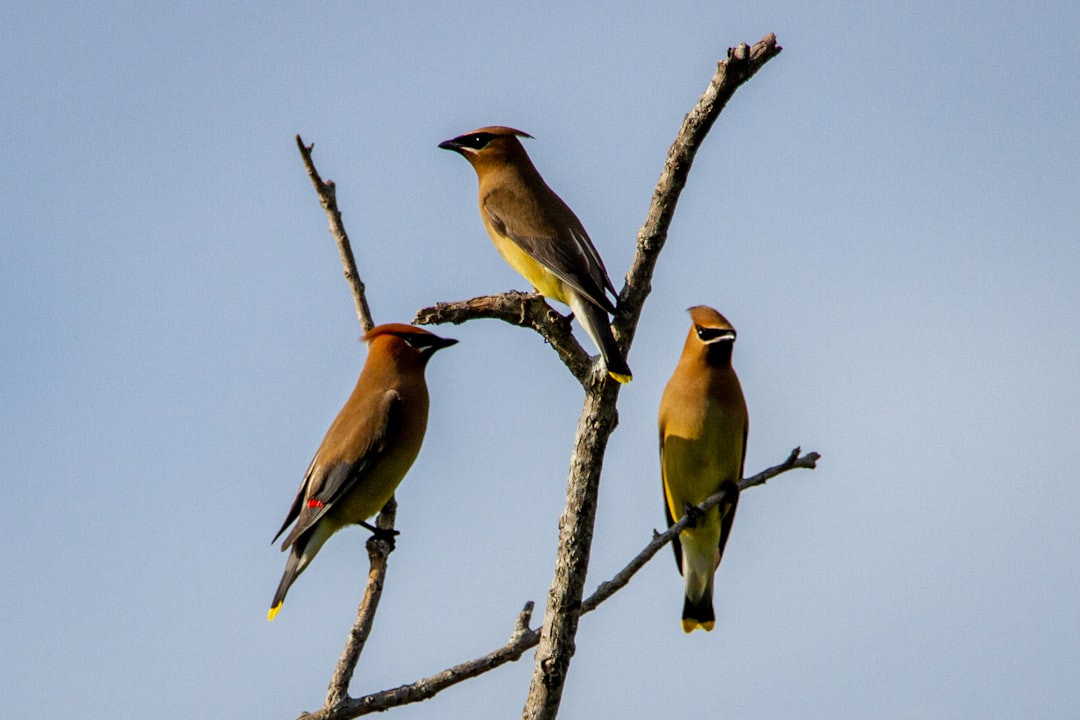
Cedar waxwings are fascinating birds with a diet that varies depending on the season. In the summer, you might be curious about what cedar waxwings eat. These sleek, social birds primarily feast on a plethora of fruits and berries, making them nature’s own fruit connoisseurs. They love dining on the ripe berries of serviceberry, dogwood, and wild cherry. If you have any of these plants in your backyard, chances are high you’ll spot a cedar waxwing enjoying a summer snack.
In addition to fruits, cedar waxwings also consume insects, particularly during the warmer months. This happens because insects provide the high protein these birds need for breeding and raising their young. You’ll often find them snatching up flies, beetles, and other small insects mid-flight—aerial acrobatics at its best!
So, what do cedar waxwings eat in the summer? It’s a mix of fruits and insects, perfectly balanced to sustain them through the season’s demands. Their dietary choices reflect their adaptability and resourcefulness, making them a delight to observe whether you’re a seasoned birdwatcher or a casual nature enthusiast. Next time you see these elegant birds, you’ll know exactly what fuels their vibrant energy!
What do baby cedar waxwings eat?

Cedar waxwings are fascinating and beautiful birds, known for their sleek, silky feathers and the bright red tips on their wing feathers. But what truly intrigues bird enthusiasts is their diverse diet. So, what do baby cedar waxwings eat? These tiny offspring have unique dietary needs that differ from their adult counterparts. While adult cedar waxwings primarily enjoy a diet rich in fruits like berries and apples, baby cedar waxwings need more protein to support their rapid growth. In the early stages, these juveniles rely on their parents to feed them soft-bodied insects such as caterpillars, aphids, and beetles. This protein-rich diet helps build strong bones and feathers.
As they grow, the parent birds gradually introduce more fruit into their diet. By the time they are ready to fledge, young cedar waxwings are accustomed to their future diet of mostly fruit, but they’ll still snack on insects now and then. Learning these details about what baby cedar waxwings eat provides a wonderful insight into the lifecycle and habits of these elegant birds. It also highlights the importance of a balanced diet for different growth stages, ensuring that these charming creatures thrive in their natural habitats.
What can I feed cedar waxwings?

Cedar waxwings are truly fascinating birds with a diet that’s as interesting as their sleek, beautiful plumage. So, what can I feed cedar waxwings to keep them happy and coming back for more? These feathered friends are primarily frugivores, meaning fruit is their main dish. They love berries of all kinds, such as juniper, dogwood, and mulberry. In fact, their penchant for fruit is so strong that they’ll even eat fruit that’s fermented, which can hilariously lead to tipsy birds!
But their diet isn’t limited to just fruit. Cedar waxwings also enjoy a good insect snack, especially during the breeding season when protein is crucial. You’re likely to spot them snacking on beetles, ants, and caterpillars. If you’re looking to attract these birds to your yard, consider putting out a variety of fruits like apples, raspberries, and blackberries. You can also plant native berry-producing shrubs to provide a natural food source.
Bird baths are another great way to attract cedar waxwings, as they enjoy drinking and bathing in fresh water. Providing a consistent food and water supply will not only delight the cedar waxwings but also offer you endless bird-watching enjoyment. So, now you know what to feed cedar waxwings—happy birding!
Do cedar waxwings feed on the ground?

Ever marvel at the sleek and elegant Cedar Waxwing and wonder what fuels their energetic lifestyle? These birds are true connoisseurs when it comes to their diet. If you’ve ever pondered, "Do cedar waxwings feed on the ground?" you’re not alone!
Cedar Waxwings have an eclectic menu, starting primarily with their insatiable appetite for berries and sugary fruits. You’ll often spot them feasting on serviceberries, dogwood, and juniper berries, among others. These fruits provide the sugar rush they need, especially during the breeding season.
But fruits aren’t their only fare! Cedar Waxwings adapt their diet with the seasons. In spring and summer, their diet gets a protein boost. You’ll catch them in the act of snatching insects mid-air, particularly fond of beetles and ants. So, do cedar waxwings feed on the ground? Occasionally, yes! While they prefer to pluck fruits directly from trees, they might descend to the ground to nab fallen berries or insects.
Interestingly, these social birds often feed in flocks, making mealtime a communal event. So next time you’re out birdwatching, keep your eyes peeled. You might just catch them enjoying a berry brunch or engaging in an insect hunt, adding a delightful chapter to their dietary narrative!
Do cedar waxwings eat seeds?

Cedar waxwings are quite the fascinating little birds, instantly recognizable with their sleek, silky feathers and vibrant yellow-tipped tails. If you’ve ever wondered about their eating habits, you’re in for a treat. These birds have a notably diverse diet that shifts with the seasons. So, do cedar waxwings eat seeds? Not typically. Their diet primarily consists of fruits and berries, which they forage for in trees and bushes. Apples, mulberries, and dogwood berries are among their favorites during the warmer months.
When summer wanes, they switch gears slightly. In colder months, cedar waxwings show some flexibility and may also consume some insects like ants, caterpillars, and beetles, often snatching them right out of the air with impressive agility. Nonetheless, seeds aren’t usually on their menu. They much prefer the natural sugars found in berries which provide the energy needed for their active lifestyles.
Interestingly, cedar waxwings play a crucial role in seed dispersal. After feasting on berries, they help spread plant seeds through their droppings, thereby contributing to plant propagation. So, while they don’t eat seeds directly, they inadvertently support the growth of new plants. All in all, these birds are a harmonious part of the ecosystem with an eclectic diet that matches their vibrant personalities.
What do cedar waxwings drink?

Cedar Waxwings are fascinating birds known for their sleek plumage and striking head crests. Their diet is quite varied and predominantly consists of fruits and berries. They have a particular fondness for juniper berries, serviceberries, and crabapples. These fruits provide the necessary nutrients to keep them energized. Cedar Waxwings aren’t overly picky and will also snack on honeysuckle, dogwood, and mountain ash berries depending on what’s available in their habitat.
During the breeding season, these birds expand their diet to include protein-rich insects like aphids, beetles, and caterpillars. This helps them sustain their increased energy needs. You’ll often find them fluttering near fruiting trees and shrubs, as well as sallying out from perches to catch flying insects mid-air.
Now, you might be wondering, what do cedar waxwings drink? Primarily, they drink water like most birds. They seek out fresh water sources such as streams, bird baths, and even rain puddles to quench their thirst. Interestingly, their diet of juicy fruits also provides a significant amount of hydration, reducing their need to find water frequently. So, the Cedar Waxwing’s diet is a balanced mix of fruits, insects, and essential hydration sources, making them versatile and adaptable in various environments.
How do you get cedar waxwings to a feeder?
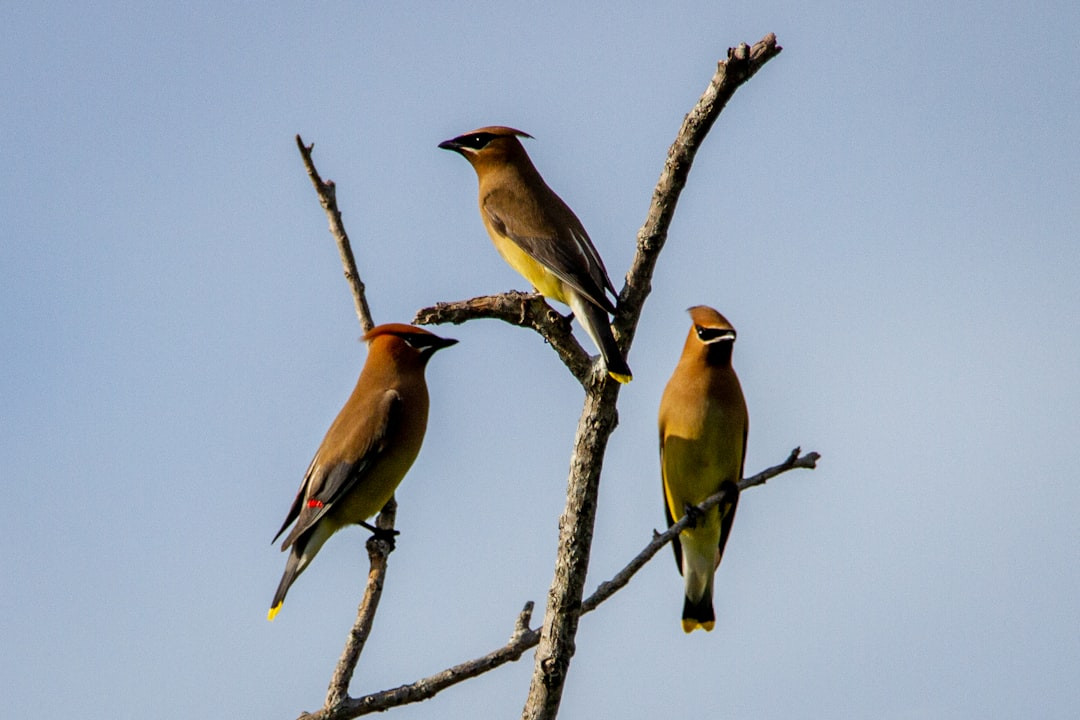
Cedar Waxwings are the delightful fashionistas of the bird world with their sleek, silky brown feathers and distinctive black masks. If you’re hoping to attract these beauties to your backyard, it’s essential to understand their dietary preferences. Cedar Waxwings primarily feast on fruit, with berries like serviceberries, dogwood, and mulberries topping their favorite menu items. They also eat insects, especially during the warmer months, providing a balanced diet that suits their needs year-round.
So, how do you get cedar waxwings to a feeder? Well, it’s all about mimicking their natural cuisine. Stock your feeder with berries or fruits, such as apples, raisins, and sliced grapes. You can also include mealworms and suet to cater to their insectivorous side, particularly in the summer.
Placing your feeder in a quiet, open spot in your garden will make it more inviting. Planting native fruit-bearing shrubs nearby will also help create a haven for these birds. Observing cedar waxwings as they elegantly swoop down to dine is a pleasure that many bird enthusiasts cherish. Understanding their food preferences and providing the right treats will surely make your outdoor space a cozy dining spot for these feathered visitors.
Are cedar waxwings omnivores?
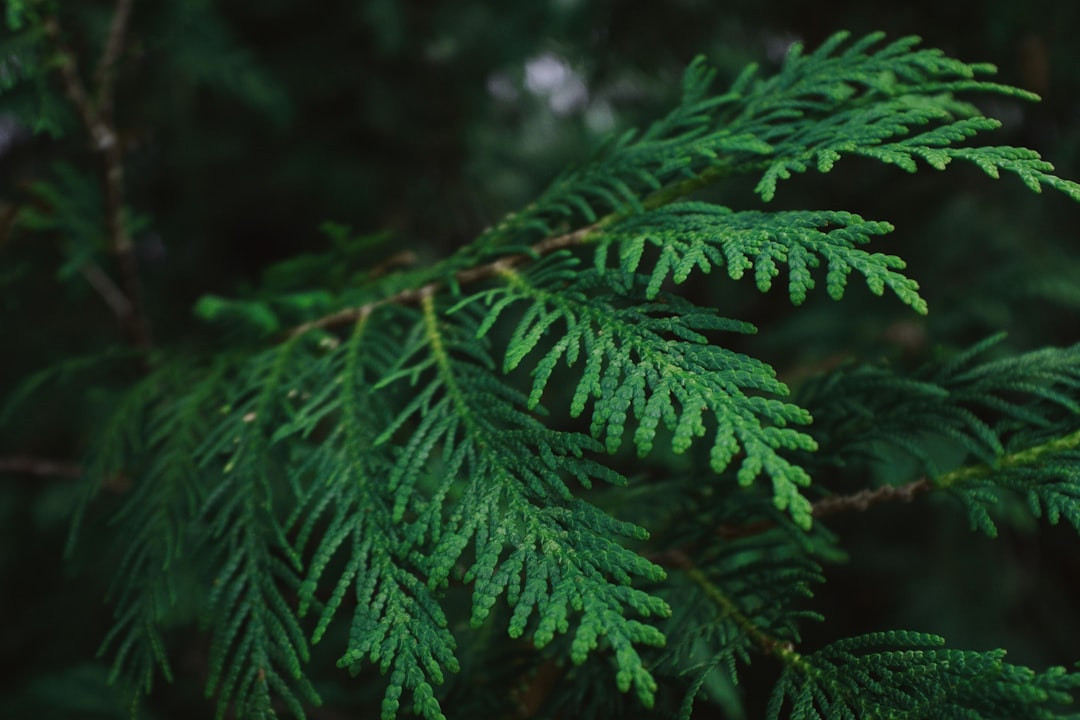
Cedar waxwings are fascinating birds, known for their sleek, silky feathers and unique behaviors. If you’ve ever wondered what fuels these interesting creatures, you’re not alone. Are cedar waxwings omnivores? The answer is yes, they have quite the diversified diet.
Primarily, cedar waxwings are big fans of fruits and berries. In fact, these make up most of their diet, especially during the fall and winter months. Think of juniper berries, dogwood, and wild cherries—these birds can’t seem to get enough of them. You’ll often spot a flock in berry-laden trees, happily munching away.
But fruit isn’t their only forte. When fruits are scarce, especially in the warmer months, cedar waxwings turn to an array of insects for sustenance, making them classic omnivores. They’ll feast on beetles, caterpillars, and ants, providing their protein needs.
What’s even more interesting is their feeding behavior. Watch them closely, and you might notice them catching insects mid-air—a skillful and acrobatic display! This flexible diet ensures they can thrive in various environments, from woodlands to gardens to suburban areas.
So, in conclusion, cedar waxwings are versatile eaters, adapting their diet to the seasons and available resources, proving they are indeed omnivores.
Cedar Waxwing Diet FAQs

Cedar waxwings are such fascinating birds, aren’t they? They have a pretty unique diet that’s definitely worth exploring. If you’ve ever wondered, “What do cedar waxwings eat?” you’re in the right place. These charming birds are fruit connoisseurs, feasting primarily on berries and other small fruits. During different seasons, they adjust their menu a bit, which keeps things interesting.
In the summer, cedar waxwings love to snack on insects like beetles and caterpillars, providing their much-needed protein. As autumn arrives, they shift their focus to the abundant berries, scarfing down juniper, cedar, and dogwood berries, just to name a few. Winter doesn’t stop them; they lean heavily on the fruit of trees like mountain ash and hawthorn.
Spring brings a new array of food choices for these little guys, with apple blossoms and mulberries making an appearance in their diet. Cedar waxwings are also known to enjoy sips of sap from time to time.
Got more questions? Dive into our Cedar Waxwing Diet FAQs to get all your curiosities answered. From seasonal changes to their quirky feeding habits, this guide covers it all, making sure you’ll always know what’s on the menu for these beautiful birds.
Will cedar waxwings eat from feeders?
Cedar Waxwings are fascinating birds known for their sleek appearance and sociable nature. But what do these feathered creatures eat? Primarily, their diet consists of fruit, with a particular fondness for berries like serviceberries, dogwood, and mulberries. They’re known to flock to trees and shrubs, picking fruit with precision and delight.
In addition to fruit, cedar waxwings munch on insects, especially during the breeding season when they require extra protein. You might catch them snacking on beetles, caterpillars, or ants. This seasonal shift is crucial for their growing young.
But, you might wonder, will cedar waxwings eat from feeders? The answer is yes, though they have specific preferences. Regular birdseed might not entice them, but offering dried fruits or berries can. Try mixing dried cranberries or raisins into your feeder’s fare. Some folks also set out fresh fruit pieces like apple slices. A little creativity can go a long way in attracting these beautiful birds to your yard.
Observing cedar waxwings can be a joyous experience. Their chatter and graceful flight patterns bring life to any garden. By understanding and catering to their diet, you can invite these elegant birds to share your outdoor space, adding a touch of wild charm to your everyday life.
Do cedar waxwings eat oranges?
Cedar waxwings are quite the charming sight with their sleek plumage and distinctive markings. But ever found yourself wondering what these birds munch on to keep so lively? Their diet is indeed fascinating and diverse! Predominantly, cedar waxwings are frugivores, meaning they have a strong preference for fruit. In spring and summer, they feast on sugary berries and small fruits like serviceberries, dogwood, and wild cherries. However, as the seasons change, so does their menu. Come fall and winter, they’re often seen snacking on a wide variety of berries, such as hawthorn and mistletoe.
Now, you might be curious: Do cedar waxwings eat oranges? While oranges aren’t a staple in their natural diet, these adaptable birds aren’t strangers to trying out new treats, especially if commonly available fruits are scarce. If you place orange slices out in your backyard, there’s a good chance these feathered friends might stop by for a bite!
In addition to fruits, cedar waxwings sometimes go for protein-rich insects, especially during the breeding season, when they need that extra energy. All in all, their diet is quite the delightful mix, which helps them thrive year-round, adding a splash of color and life to their surroundings.
Do cedar waxwings eat suet?
Cedar waxwings are delightful, social birds easily recognized by their silky plumage and distinctive black mask. These birds have quite the diverse diet, showcasing their adaptability throughout the seasons. If you’ve ever wondered, "Do cedar waxwings eat suet?" you’re not alone. While they primarily feast on fruits and berries, cedar waxwings are known to change their diet according to what’s available.
During summer, they’re particularly fond of sugary berries like serviceberries, mulberries, and dogwood berries. Wintertime sees them munching on whatever fruits they can find—mainly juniper, cedar, and elderberries. Aside from fruits, cedar waxwings also snack on insects such as beetles and caterpillars, especially when feeding their young.
Now, addressing the curiosity: do cedar waxwings eat suet? Though suet is not a mainstay in their diet, cedar waxwings might occasionally peck at suet, particularly if it’s mixed with fruits or berries. However, suet feeders aren’t typically their go-to spots compared to fruit-filled trees and shrubs.
So, while these birds thrive on a diet brimming with natural fruits and the occasional insect, they have the flexibility to partake in a bit of suet if it ticks their boxes. Next time you spot these fascinating creatures, see if you can line up their favorite treats to watch them in action!
Do cedar waxwings eat holly berries?
Cedar waxwings are such fascinating birds, especially when it comes to their eating habits. These sleek, elegant birds with their silky plumage and distinctive crest have quite the varied diet. So, do cedar waxwings eat holly berries? Absolutely, they do! In fact, holly berries are among their favorites, particularly during the winter months when other food sources might be scarce.
These birds are known for their love of fruit, and they’re often seen feasting on a wide array of berries. Apart from holly berries, cedar waxwings enjoy juniper, serviceberries, and dogwood berries, to name a few. Their diet isn’t limited to just fruits, though. They also consume insects, especially during the breeding season when they need extra protein for their young.
What’s endearing about cedar waxwings is their social nature. They often feed in flocks, making berry-laden trees a lively sight as they gather and take turns picking the fruit. Seeing them in action, you can truly appreciate their role in nature, not just as consumers but also as vital seed dispersers. So, next time you spot a holly bush or a berry tree, take a moment to look around. You might just see these elegant diners enjoying their meal.
Do cedar waxwings eat blueberries?
Cedar waxwings are like nature’s fruit aficionados, and their diet is a delightful testament to their love for berries and other fruits. If you’ve ever wondered, “Do cedar waxwings eat blueberries?” the answer is a resounding yes! Blueberries, along with other small fruits, make up a significant part of their diet, especially during the warmer months when these tasty morsels are plentiful.
These sleek, social birds are often seen flitting about in flocks, searching for their next fruity meal. Their menu includes a variety of berries—such as serviceberries, strawberries, and blackberries—in addition to blueberries. Interestingly, cedar waxwings are also fond of apples and cherries, displaying their diverse taste for different kinds of fruit.
In addition to their preference for berries, cedar waxwings will occasionally snack on insects, particularly during the breeding season when they need extra protein. You might catch them catching flies or munching on caterpillars and beetles. However, it’s the fruit that truly captures their hearts.
So, next time you spot these beautiful birds, remember that their love for berries, especially blueberries, plays a key role in their dietary habits. It’s nature’s perfect partnership: cedar waxwings and their beloved fruits.
Do cedar waxwings eat crab apples?
Cedar waxwings are beautiful, sociable birds with striking plumage and a distinctive appetite. If you’re wondering, "Do cedar waxwings eat crab apples?" the answer is a resounding yes! These birds have a diet that’s as varied as it is intriguing, leaning heavily on fruits, which makes them unique among many bird species.
During different seasons, cedar waxwings adjust their eating habits based on the available abundance. In the summer, they feast on the juicy offerings of berries, such as blueberries, strawberries, and blackberries. As the seasons change, these agile flyers turn to fall and winter fruits like cedar berries and, yes, crab apples. These small, tart apples become a crucial part of their diet when other fruits are scarce. Cedar waxwings aren’t picky and also enjoy apples, cherries, and even some types of grapes.
Apart from fruits, cedar waxwings occasionally eat insects, like ants and beetles, to supplement their diet, especially during breeding season when they need extra protein. However, fruits remain their favorite delicacy. If you have a yard with fruit-bearing trees or shrubs, you might just attract these lovely birds. Planting crab apple trees can be especially rewarding, as cedar waxwings are sure to appreciate the tasty treats!
Do cedar waxwings eat sunflower seeds?
Cedar waxwings are fascinating birds with a distinctive diet that sets them apart from many of their avian cousins. One might wonder, do cedar waxwings eat sunflower seeds? While these seeds are a favorite for many backyard bird species, cedar waxwings have more particular tastes. Their diet primarily consists of fruit, which they consume in abundance. Berries, in particular, top their favorite foods list, with cedar waxwings often seen feasting on serviceberries, dogwood berries, and cherries.
In addition to fruits, these birds also enjoy insects, especially during the breeding season when additional protein is crucial for growing chicks. It’s not uncommon to spot them snatching flies, beetles, or even caterpillars out of the air. When their preferred foods are scarce, cedar waxwings may adapt to other fruit sources like apples or even mistletoe berries.
While they’re typically not interested in sunflower seeds, cedar waxwings’ diverse fruit and insect diet ensures they find the nutrition they need. So, if you’re hoping to attract these beautiful birds to your garden, consider planting berry-producing shrubs and trees rather than setting out sunflower seeds. That way, you can enjoy the delightful sight of cedar waxwings visiting your backyard.




